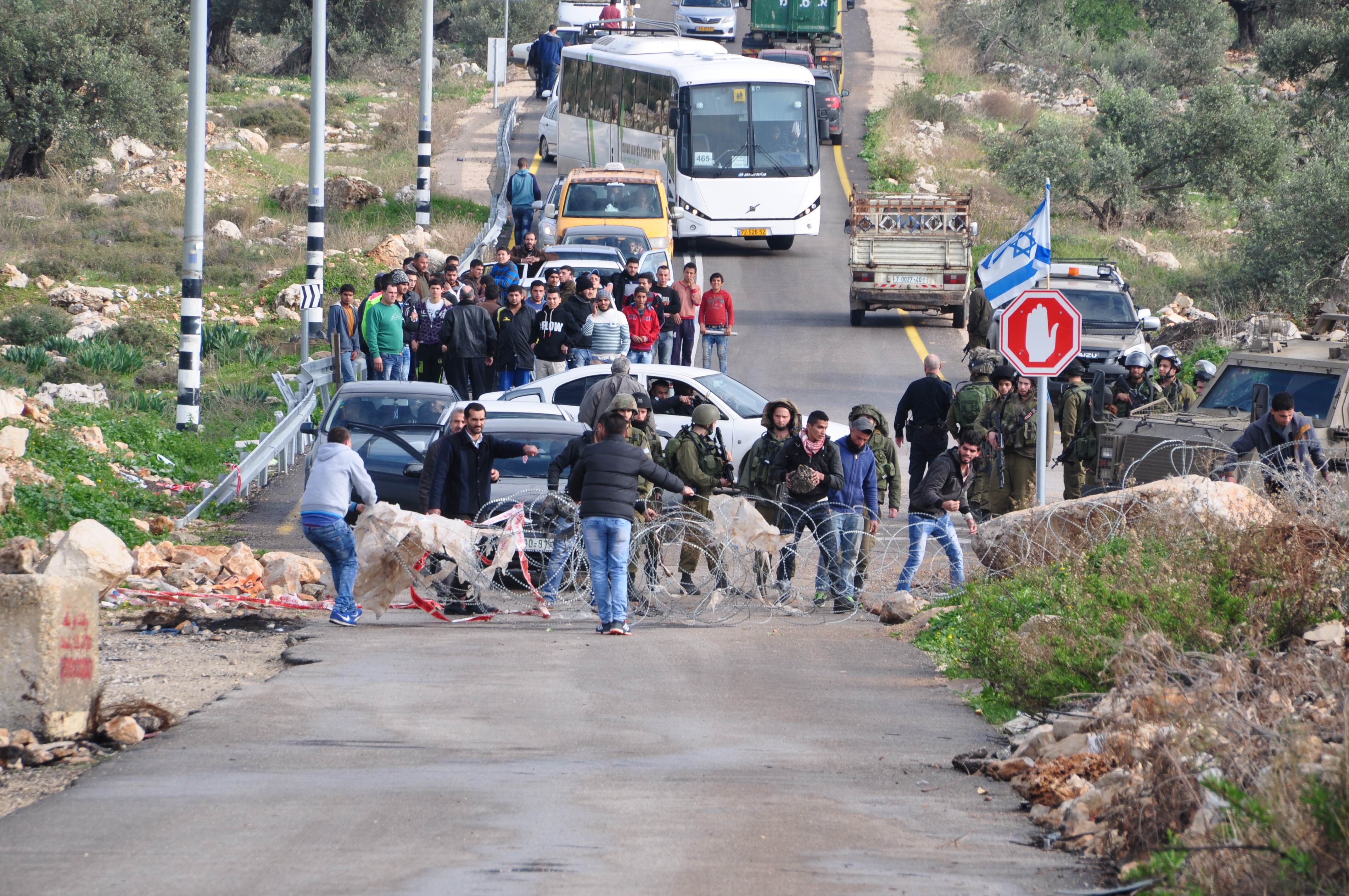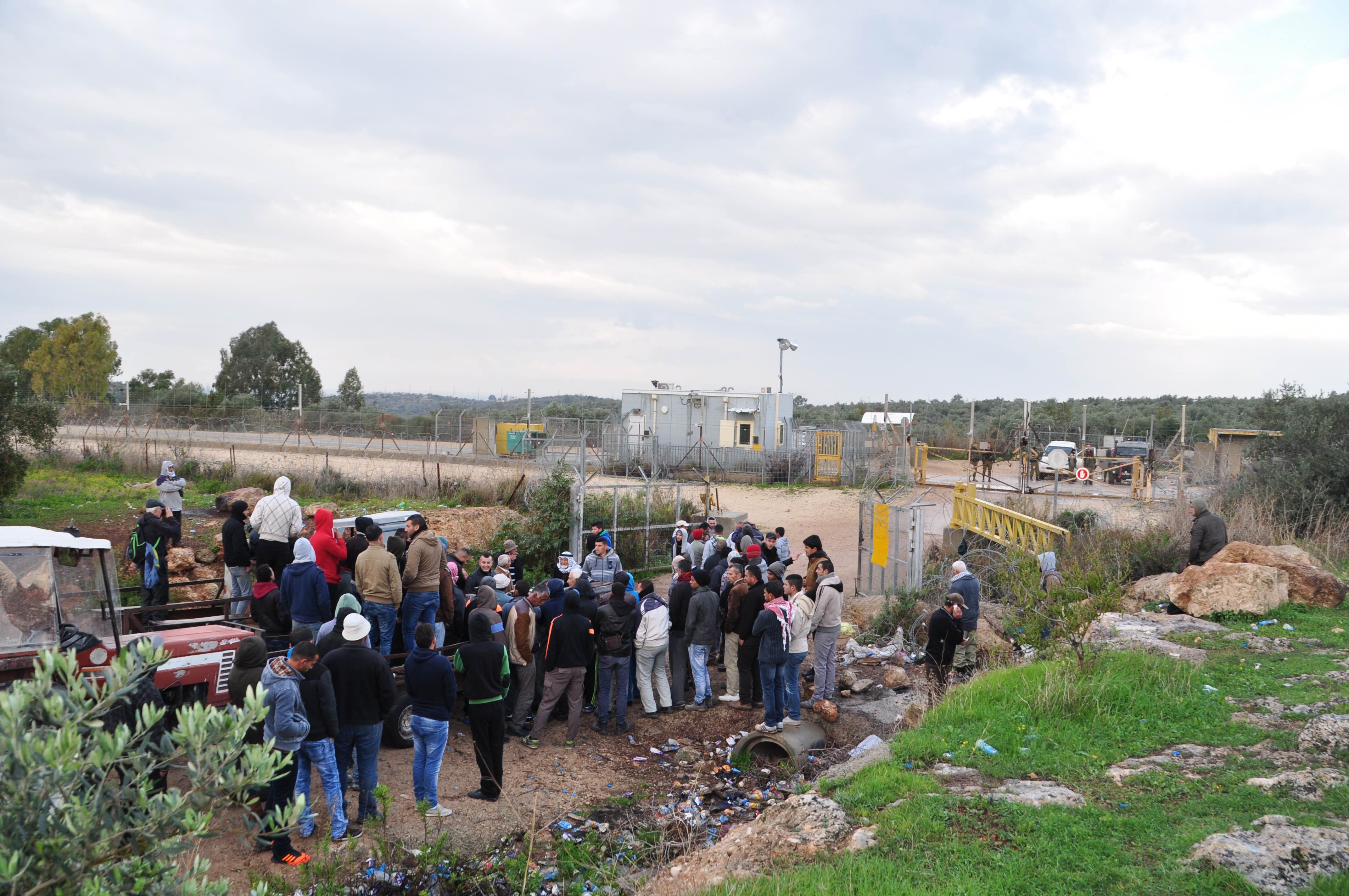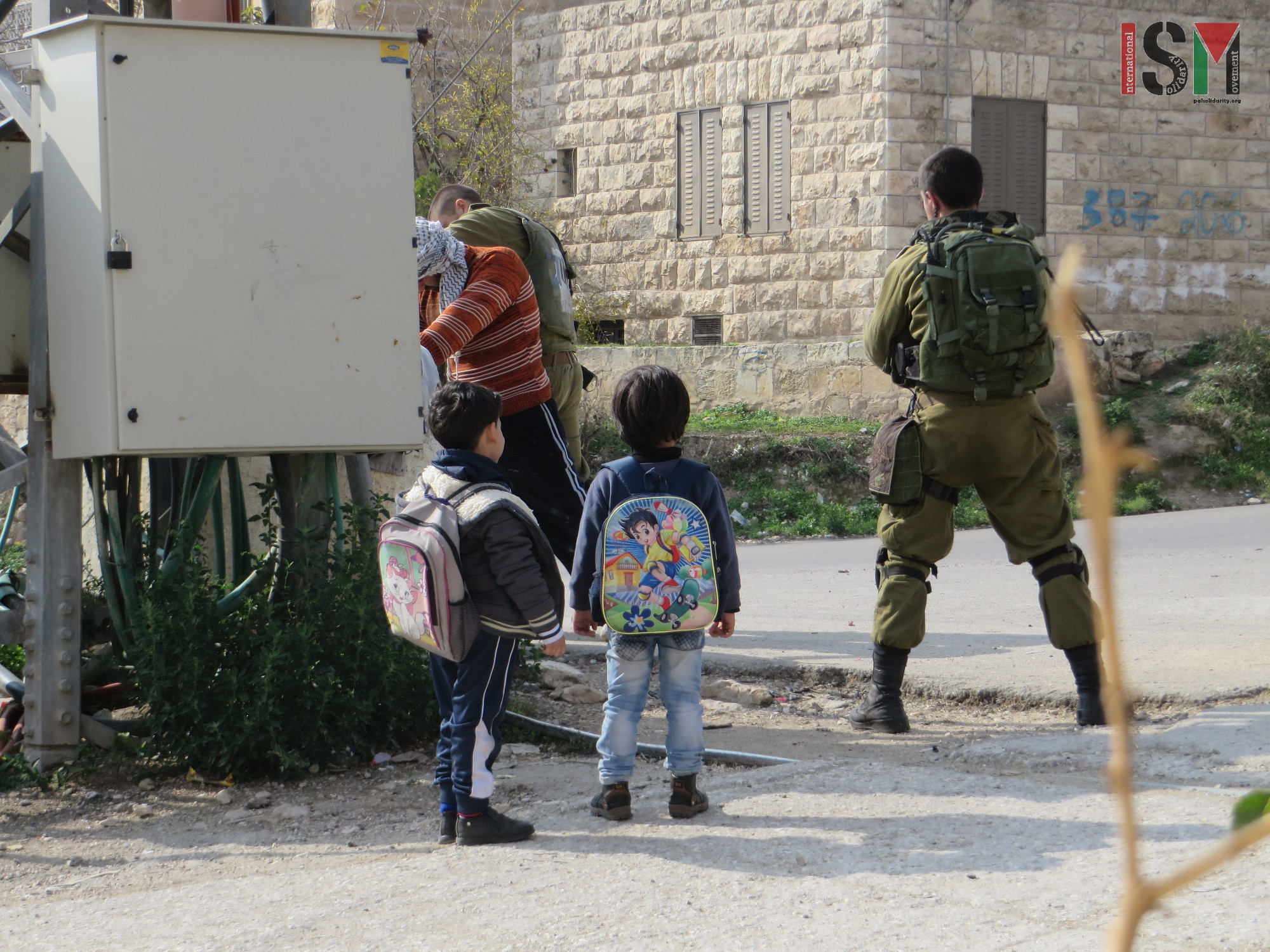Category: Features
-
Palestinians remove roadblock restricting movements of villagers near Tulkarm
December 18th, 2015 | International Solidarity Movement, Tulkarm team | Shufa, occupied Palestine UPDATE 22nd December: After the removal of the road block during last weeks demonstration in Shufa village, Israeli forces told villagers that they will keep the road open in the future. But since then the road has remained closed almost every day,…
-
Farmers protest closure of gate blocking them from accessing their land
18th of December, 2015 | International Solidarity Movement, Tulkarm team | Deir al Ghsoon, occupied Palestine Hundreds of farmers protested on the morning of the 18th of December against the closure of an agricultural gate, which led Israeli commanders to agree to reopen the way. In 2002, 3200 dunumns of farmland got cut of from the…
-
Photo story: daily harassment by Israeli Forces on the way to school
December 18th, 2015 | International Solidarity Movement, al Khalil team | al Khalil, occupied Palestine On Thursday, 17th December 2015, Israeli forces yet again body-searched every male adult – and also youth – passing Ziad Jaber school in occupied al-Khalil (Hebron). Most female adults were also searched by male soldiers, a clear violation of their…



